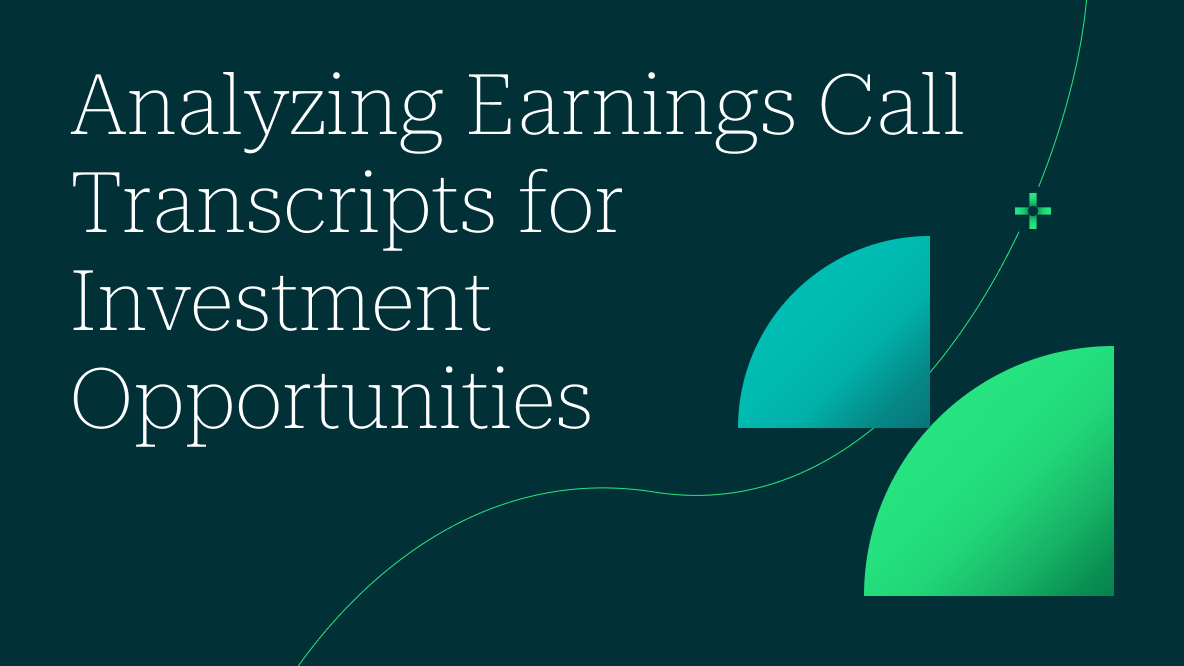Earnings calls are vital events for publicly traded companies and their stakeholders. These calls, usually conducted after the announcement of quarterly or annual financial results, offer a transparent overview of a company’s performance, directly from top executives. The transcripts of these earnings calls are equally important, providing a written record that captures every detail of these crucial corporate events. They serve as an invaluable resource for investors, analysts, and financial enthusiasts who seek to delve deep into a company’s financial health and strategic direction.
Why Do Companies Hold Earnings Calls?
Earnings calls provide a platform for companies to communicate financial results, justify their past actions, and outline future directions. They are essential for maintaining a transparent relationship with investors and ensuring that all stakeholders have a clear understanding of the company's financial health. During these calls, management discusses key financial metrics, potential challenges, and strategic initiatives, offering both reassurance and insight to investors. Despite not being legally mandated, these calls are a standard practice among public companies, underlining their commitment to transparency.
What’s Covered in an Earnings Call?
An earnings call typically includes a presentation by the company’s executives—often the CEO and CFO—followed by a Q&A session where analysts and investors can pose questions. The initial presentation covers the financial results of the quarter or fiscal year, comparing them against previous forecasts and industry benchmarks. The executives discuss revenues, earnings, expenses, and profit margins, along with any significant financial or business developments. The subsequent Q&A session offers insights into the executives' thoughts on the company's future prospects and market conditions.
Are Earnings Calls Public?
Yes, earnings calls are open to the public. This accessibility underscores a company's commitment to transparency, allowing analysts, investors, and even the general public to hear directly from top executives about the company's financial status and future outlook. Typically hosted via a conference call or webcast, these calls ensure that everyone, regardless of their location or investment in the company, has access to crucial financial information and executive insights.
What Are Earnings Call Transcripts?
Earnings call transcripts are textual representations of these calls, documenting every spoken word during the event. These transcripts are crucial for those who cannot attend the live event or prefer to analyze the discussions in detail at their own pace. They offer several advantages, such as the ability to search for specific keywords, review financial data discussed during the call, and analyze the nuances of executive communication which might indicate future strategies or current challenges.
How Can I Use Earnings Call Transcripts to Inform My Financial Models?
Earnings call transcripts can significantly enhance financial modeling by providing the raw data and executive insights needed to forecast future performance. Analysts use these transcripts to extract qualitative insights about market conditions, company strategy, and management's outlook that can affect a company's valuation. This information is crucial when building predictive models that estimate future revenues, earnings, and expenses, allowing for a more informed investment decision-making process.
How Can I Listen to Earnings Calls?
Dial-in: Companies typically provide a dial-in number and access code. Call the number, enter the code, and you’re part of the live event.
Webcast: Access the earnings call through a live stream on the company’s investor relations page. This method often provides visual aids like slides or charts.
Replay: Missed the live call? No problem. Most companies offer a recorded version on their investor relations site, allowing you to listen at your convenience.
Tegus: This platform not only provides transcripts but also includes recordings of the calls and presentation materials, enhancing the user experience by offering comprehensive access to earnings call content.
Where Can I Find Transcripts of Earnings Calls?
SEC Edgar: The SEC’s Edgar database is a primary source for earnings call transcripts, where you can access official submissions by companies.
Investor Relations Pages: Most companies post their earnings call transcripts on their investor relations websites shortly after the call, making it easy to find and reference.
Tegus: Tegus offers a robust database where users can search earnings call transcripts for specific keywords, annotate significant details, and share findings with colleagues. It also includes related presentation decks to provide additional context and management commentary, enriching the research process.
Earnings call transcripts are essential tools for anyone involved in the financial markets. They allow investors and analysts to dissect and discuss every aspect of a company's disclosed information, providing a deeper understanding of its financial health and strategic direction. Whether you’re a seasoned analyst, a potential investor, or just a curious observer, these transcripts can provide valuable insights that are not available through other sources, making them a cornerstone of financial research.
